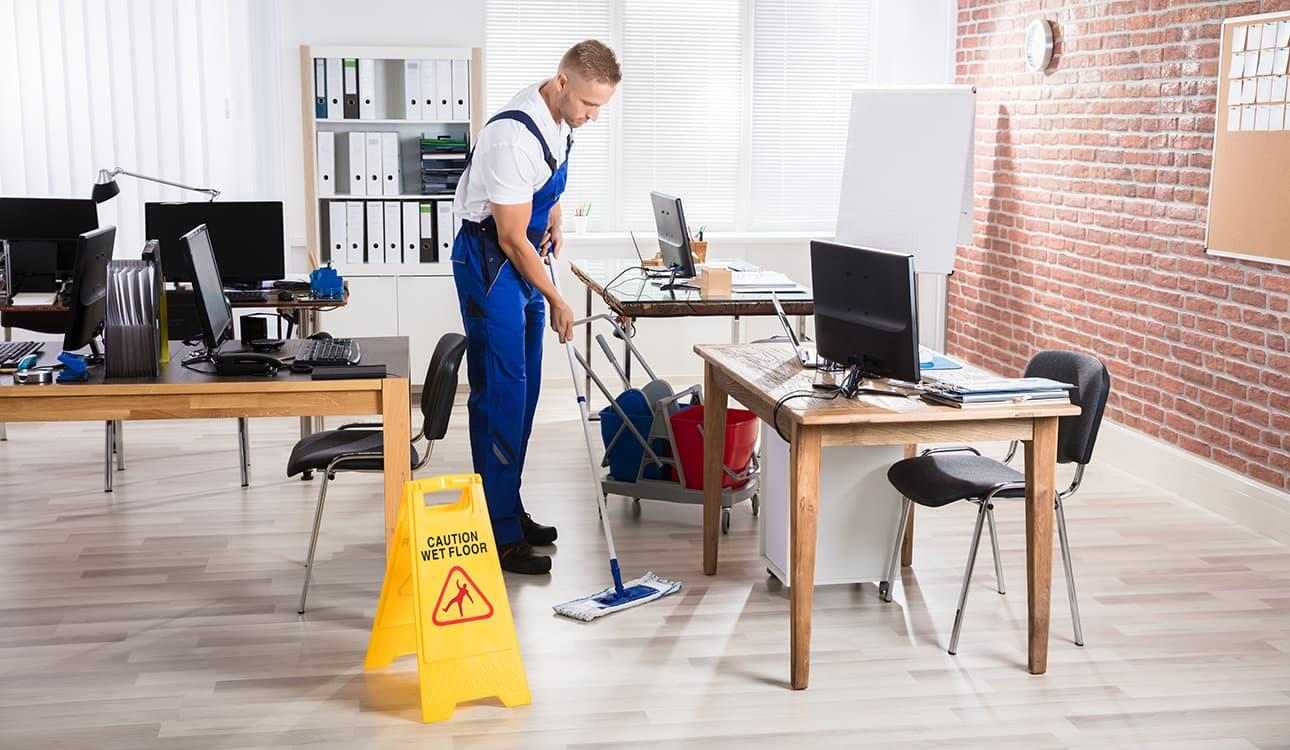Around the world, many workers spend day after day at the office, often from early morning to early evening. However, some employees tend to focus on projects and deadlines while ignoring the upkeep of their workspaces. One survey revealed that one in 10 office workers cleans their desk just once a month, and nearly one in 10 admit their workstation never gets disinfected.
Building service contractors (BSCs) should understand that in an office setting, cleanliness plays a key role in keeping employees healthy and leads to a more productive workforce. A clean and hygienic office also creates an appealing environment for staff and visiting clients and shapes a company’s brand image. With these facts in mind, BSCs responsible for cleaning commercial offices should focus on several key approaches to keep these spaces clean.
It Starts with Hands
BSCs must understand the role hand hygiene plays in office cleanliness and health. Four out of every five common infections, such as cold and flu viruses, are spread by hands. Therefore, increased hand hygiene has enormous potential to improve overall office hygiene and keep employees from missing work. In addition, clean hands spread fewer germs onto high-touch surfaces like desks and doorknobs.
BSCs can stress the importance of hand hygiene by encouraging offices to stock hand sanitizer– the Centers for Disease Control and Prevention (CDC) recommends a product containing 60% alcohol or more. Be purposeful about positioning sanitizer dispensers around the office in entrances, hallways, board rooms and common areas. Look for hybrid dispensers with both an automatic and a manual option to provide uninterrupted hand hygiene. For restrooms, BSCs should regularly refill a hand soap product that cleans hands and leaves a pleasant scent in the washroom for future users, an extra sign of cleanliness.
Supervising Key Areas
Inside an office, numerous high-touch surfaces, as well as hard-surface and carpet floors, inevitably attract germs and stains. It is crucial to maintain these areas to promote a hygienic and clean workplace:
- Promote proper management of high-touch surfaces.
- Employees constantly touch their desks, answer their phones, type on their keyboards and turn doorknobs to go from room to room. At the same time, pathogens move from surface to surface by a simple touch. This makes it important to clean and disinfect frequently touched surfaces like desks, break room tables, phones, keyboards, doorknobs and light switches. To handle these surfaces, seek out versatile, non-toxic disinfectant wipes that deliver fast-acting, broad spectrum disinfection with enhanced cleaning power. Implement and track a schedule to ensure regular cleaning of all high-touch surfaces.
- Find an exit strategy for dirty floors.
- Whether an office floor is carpet, hardwood or tile, it can become dirty quickly. Employees’ shoes track in debris and water from outdoors, and those who eat lunch in the office may spill soda and drop food on the floor. BSCs should integrate the floor-cleaning plan into a larger strategic cleaning plan, and they should look for the most effective products to match their office’s needs.
- For carpet, find a general-purpose cleaner that takes care of tough stains without re-soiling the carpet. Vacuum consistently, and consider a versatile vacuum cleaner with the ability to both minimize noise and energy consumption.
- On hard floors, fight dirt and grime buildup by mopping frequently. To optimize the mopping process, find an automatic chemical dispenser that provides the ideal amount of chemical and water every time. Not only does this lead to cleaner floors, it minimizes water and chemical waste, resulting in a more cost-effective and sustainable operation.
- Add clean restrooms to your résumé
- Dirty restrooms can negatively affect the opinions of potential clients or customers who visit the office. Additionally, a 2017 survey found that 89% of Americans believe the condition of workplace restrooms is an indicator of how a company values its employees. BSCs should build a restroom-cleaning schedule into the overall cleaning plan to ensure restrooms are always clean and pleasant smelling.
- Cleaning restrooms involves taking thorough care of various surfaces, including mirrors, counters, sinks, floors and toilets. For toilets, look for a fast-acting cleaner that clings to surfaces, both cleaning and disinfecting efficiently to avoid any downtime. For mirrors and countertops, consider quick-drying, non-ammoniated chemicals that clean effectively while leaving mirrors streak-free and a fresh scent in the air.
Cohesive Office Cleaning
Regardless of the size of the office space they oversee, BSCs must have a comprehensive and cohesive cleaning plan in place. They first need to understand that a cleaner, healthier office is a more productive office and that cleaning properly and consistently ultimately benefits the company’s bottom line. Then, BSCs should work with building and office managers to carefully devise a cleaning strategy and schedule, zero in on key areas of focus and select products designed to take on the tasks at hand.
Diversey’s facility management solutions save time and increase profits while creating greater value for your customers. Find out more at diversey.com/industry-sectors/facility-management.






